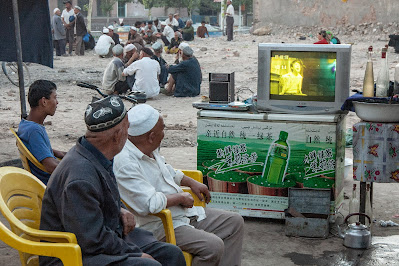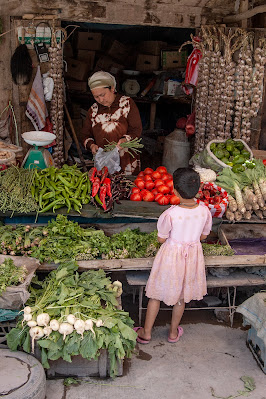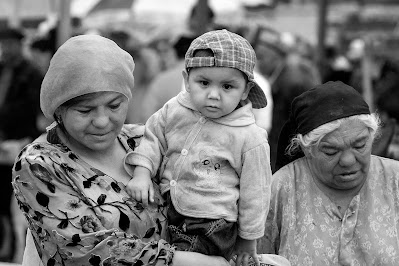Ellen, Bei, and I visited Kashgar in 2006, near the end of a year teaching and traveling in China (see blog). Tensions between the Uyghurs and the Chinese government were rising, but we were largely unaware, more tuned into tensions between Muslims and Americans during the Bush administration’s “war on terror” following 9/11. In a dusty desert town on the edge of the Taklamakan desert, a man lounging on a motorcycle asked me what I thought of Bush, pronouncing his name with a long-u, while drawing his finger across his throat.
Kashgar sits on the western edge of China’s Xinjiang Province and was an important Silk Road hub linking China to Central Asia and Europe. The predominantly Muslim Uyghurs, native to Xinjiang, are one of 55 minority ethnic groups recognized by China. Historically, Xinjiang has been controlled by Mongols, Russians, Turkic people, and Uyghurs, as well as the Chinese, but the PRC is quick to suggest that China’s cumulative control lasted longer than that of others.
In response to ethnic unrest in 2009 and partly under the cover of antiterrorism measures after 9/11, the PRC came down hard on Uyghurs, branding them separatists, terrorists, and religious extremists and enacting measures to “assimilate” them into Chinese culture. These included closures of mosques, reeducation, mass arrests, establishment of internment camps, and destruction of traditional Uyghur sections of cities including Kashgar. Like in Tibet, economic incentives have drawn Han Chinese to Xinjiang, diluting the Uyghur population and culture.
In 2021, the U.S. State Department accused the PRC of crimes against humanity and genocide in Xinjiang, adding to the growing tension between the U.S. and China. The Congressional Research Service published a useful summary of events leading to this determination, and detailed information is widely available online (e.g., here, and here), but in 2006 when we visited, much of this was in the future.
In Kashgar, we stayed at the Chini Bagh Hotel on what were the grounds of the British Consulate during the time of the Great Game when the British and Russian Empires vied for control of Central Asia and India. Bei was 5, and though keen enough to wander with her parents, eating lamb kabobs and visiting markets, I often left the hotel early to walk through the city with my camera.
Most of us wish we could see with our own eyes what the world looked like before it was “modern,” a word applied to whatever age happens to be yours. Perhaps this nostalgia is more painful for photographers. Images of everyday life 25, 50, or 100 years ago evoke fantasies about the photos we might have made. Yet here we are, time rushing by, the envy of future photographers. Kashgar and the Uyghur culture was eroding in 2006 when we visited, but much remained that is now destroyed.
I recently ran across images by Carl Mydans (1907-2004), a documentary photographer who worked for the Farm Security Administration (FSA) in the 1930s along with Dorothea Lange and later for LIFE Magazine, covering WWII and spending two years as a Japanese prisoner after being captured while working in the Philippines. His experiences left him with a keen sense of history. Mydans once said, maybe a little dramatically:
“All of us live in history, whether we are aware of it or not, and die in drama. The sense of history and of drama comes to man not because of who he is or what he does, but flickeringly, as he is caught up in events, as his personality reacts, as he sees for a moment his place in the great flowing river of time and humanity. I cannot tell you where our history is leading us, or through what suffering, or into what era of war or peace. But wherever it is, I know men of good heart will be passing there.”
I recently reprocessed some of my images from Kashgar in 2006 realizing that I never included them in my China blog. There are a lot of images here, but they capture some of the diversity and liveliness, and some of what is now the history, of the city and the Uyghurs. I’m grateful to have been there.

























